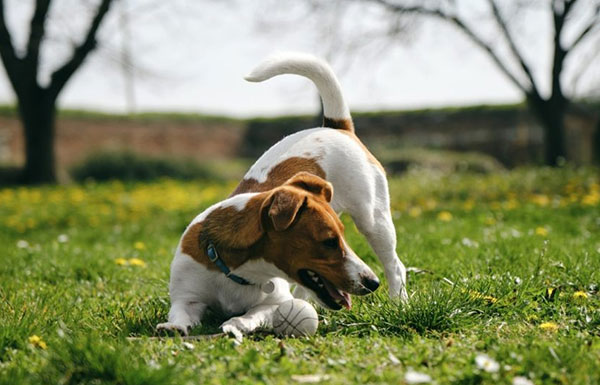Have you ever watched your dog spinning in circles, trying to catch that ever-elusive tail? It’s funny at first, maybe even adorable. But then a thought sneaks in: why do dogs chase their tails? Is it just play, or does it mean something more?
As pet parents, we often find ourselves smiling at these little quirks. Yet beneath the laughter hides a deeper question about our dog’s health and happiness. Could it be boredom? Stress? Or even a medical concern? Let’s explore what tail-chasing really means and how you can help your furry friend.
Tail Chasing in Puppies: Harmless Fun or Something More?
Picture a small puppy spinning in circles, fascinated by the moving tip of their tail. In young dogs, tail chasing is usually a phase of discovery. They see their tail, try to catch it, and sometimes succeed. It’s cute, short-lived, and often fades as they grow.
But here’s something to notice. Does your puppy chase their tail every once in a while, or do they do it often? Occasional chasing is playful fun. Frequent spinning, however, can signal restlessness or an underlying issue. Pause for a moment and think: how often have you seen your pup doing it this week
Why Do Dogs Chase Their Tails? Common Reasons
Tail chasing isn’t always a simple game. Sometimes it’s your dog’s way of saying, “I need help.” Here are the most common reasons:
1. Boredom or Lack of Stimulation
Dogs need more than food and a bed. They require daily activity, play, and problem-solving opportunities. Without this, boredom sets in, and tail chasing becomes a way to pass the time.
Ask yourself: has your dog had enough mental and physical exercise today?
2. Stress and Anxiety
When dogs feel anxious, repetitive behaviors like chasing their tail can provide temporary relief. This is more than a silly spin; it’s a coping mechanism. You might notice it during thunderstorms, when guests arrive, or if your dog spends too much time alone.
3. Medical Concerns
Sometimes, the answer to why dogs chase their tails lies in health. Fleas, parasites, irritated anal glands, or even pain in the back or hips can cause tail-focused behavior. Neurological disorders in dogs can also trigger repetitive spinning. If the chasing starts suddenly or looks intense, a vet check is essential.
4. Compulsive Behavior in Dogs
Some dogs develop compulsive patterns similar to human OCD. Canine compulsive disorder makes it hard for them to stop spinning, even if you redirect them. Breeds like Bull Terriers and German Shepherds are more prone to this. If your dog seems trapped in the cycle, speak with your vet about options, which may include medication and behavioral support.
How to Stop a Dog from Chasing Its Tail
If your dog’s tail-chasing feels more than playful, you can take steps to help:
- Avoid Encouragement: Laughing or rewarding the behavior teaches your dog that spinning earns attention. Instead, gently redirect them.
- Offer Alternatives: Teach a new trick or ask for a toy fetch: reward calm, positive behaviors.
- Increase Enrichment: Walks, puzzle feeders, sniffing games, and play sessions reduce boredom and stress.
- Seek Veterinary Guidance: If you notice obsessive chasing, sudden changes, or possible injury, get a professional opinion.
Take a moment right now. Watch your dog. Do they look restless? Could a walk or a game ease their energy? Sometimes, the slightest change makes the most significant difference.
When Should You Worry?
Tail chasing isn’t always a red flag, but you should worry if:
- Your dog spins daily and can’t be interrupted.
- They harm themselves by biting or chewing their tail.
- The chasing starts suddenly and doesn’t stop.
- Other symptoms appear, like drooling, trembling, or staring spells.
In these cases, it’s not just a game. It’s a call for help, and your vet can guide you toward the right solution.
Conclusion
So, why do dogs chase their tails? Sometimes it’s playful curiosity, sometimes it’s boredom, and other times it signals a deeper issue. As loving guardians, it’s up to us to notice the difference and step in when needed. With care, patience, and support, you can keep your dog happy, healthy, and spinning only when it’s pure fun.

https://shorturl.fm/DKa3W
https://shorturl.fm/TZLW3
https://shorturl.fm/iiX5V
https://shorturl.fm/xltnv
https://shorturl.fm/FknfM
https://shorturl.fm/AcOfK